* This article appeared in the Spring 2019 Issue of "The Twenty-Niner" the newsletter of the 29th Infantry Division Association.
Frank Irgang’s book Etched in Purple has been acclaimed as a “brutally honest memoir written by a young infantryman who landed on Normandy Beach on D-Day and fought his way across Europe” and “perhaps the finest work to come out of World War II.”[1] However, a thorough review of Irgang’s military service records demonstrates clearly that he never took part in the D-Day landings and the majority of his “memoir” is fiction.
The Story
Etched in Purple begins with Irgang and his comrades loading onto assault ships destined for Normandy. The only reference Irgang provides for his unit is “Company D” but in a postwar interview he identified his regiment as the 175th Infantry Regiment of the 29th Infantry Division.[2] Irgang then chronicles his combat in Normandy and across France, serving as a medic in “Company D” until he is lightly wounded in October 1944.[3] After a brief period of hospitalization in Cherbourg, France he returns to the frontline in November, this time as a rifleman, having been reclassified in order to provide replacements for hard-pressed infantry divisions.[4] Again Irgang does not provide details on which unit he joins, and does not say it is his former “Company D”, only that he is assigned to an infantry company fighting in Germany near the Hurtgen Forest.[5] Irgang then recalls being caught up in the first days of the Battle of the Bulge, describing in detail the suddenness of the German attack, the confused retreat, and his adventures slipping through enemy lines.[6] Irgang continues to fight throughout the winter, crosses the Rhine with his unit in the spring of 1945, and is wounded in April 1945 attacking an enemy held town.[7] After hostilities end, Irgang claims that he was transferred to the military police in Berlin because he, “was no longer fit for combat, either mentally or physically.”[8]
The Facts
At a glance, Irgang’s story does not seem overtly problematic, and his engaging writing style makes Etched in Purple a quick and compelling read. However, the officially documented details of Irgang’s wartime service call the validity of his account into question, and show Etched in Purple to be a work of fiction, rather than fact. Frank Irgang did not land on D-Day with the 29th Infantry Division or fight in the hedgerows of Normandy, and he was not wounded in action in the fall of 1944. In fact, his Army discharge shows that he did not even arrive in the European Theater of Operations (ETO) until September 24, 1944, almost four months after the D-Day landings.[9]
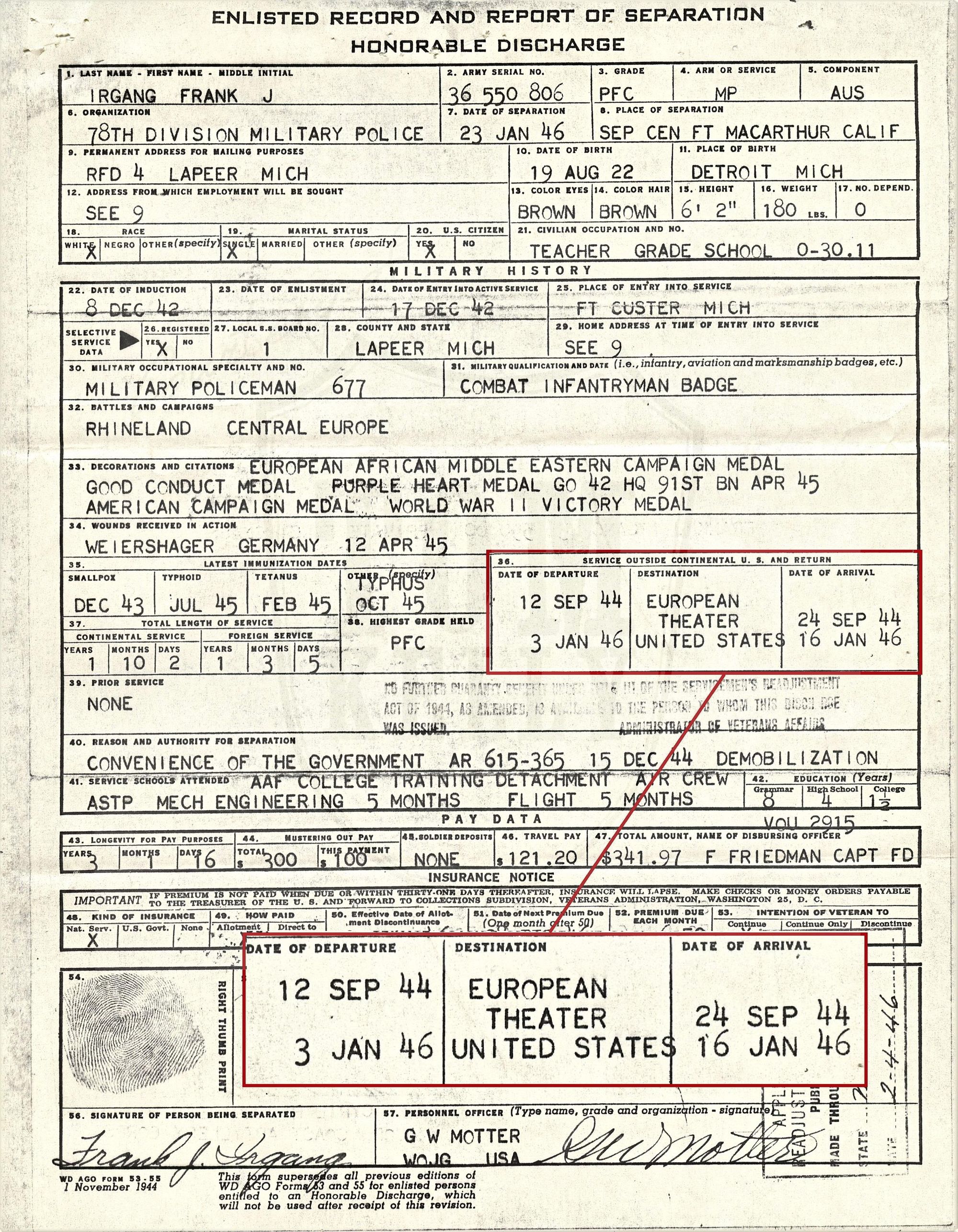
After arriving in the ETO Irgang’s travels become harder to discern, however it appears that he became part of the Army Ground Forces replacement system and likely moved between replacement camps during the fall and winter of 1944, before arriving as a replacement in F Company, 309th Infantry Regiment, 78th Infantry Division on March 15, 1945.[10] Irgang appears to have been in combat with F Company until he was wounded in the thigh almost a month later in the vicinity of Weiershagen, Germany on April 12, 1945.[11] He returned to F Company on April 27, 1945 and then was transferred to the 78th Division’s military police unit, the 78th Military Police Platoon, on June 20, 1945.[12] On November 19, 1945 he was transferred to the 29th Military Police Platoon of the 29th Infantry Division, and finally left Europe to return to the United States on January 3, 1946.[13]
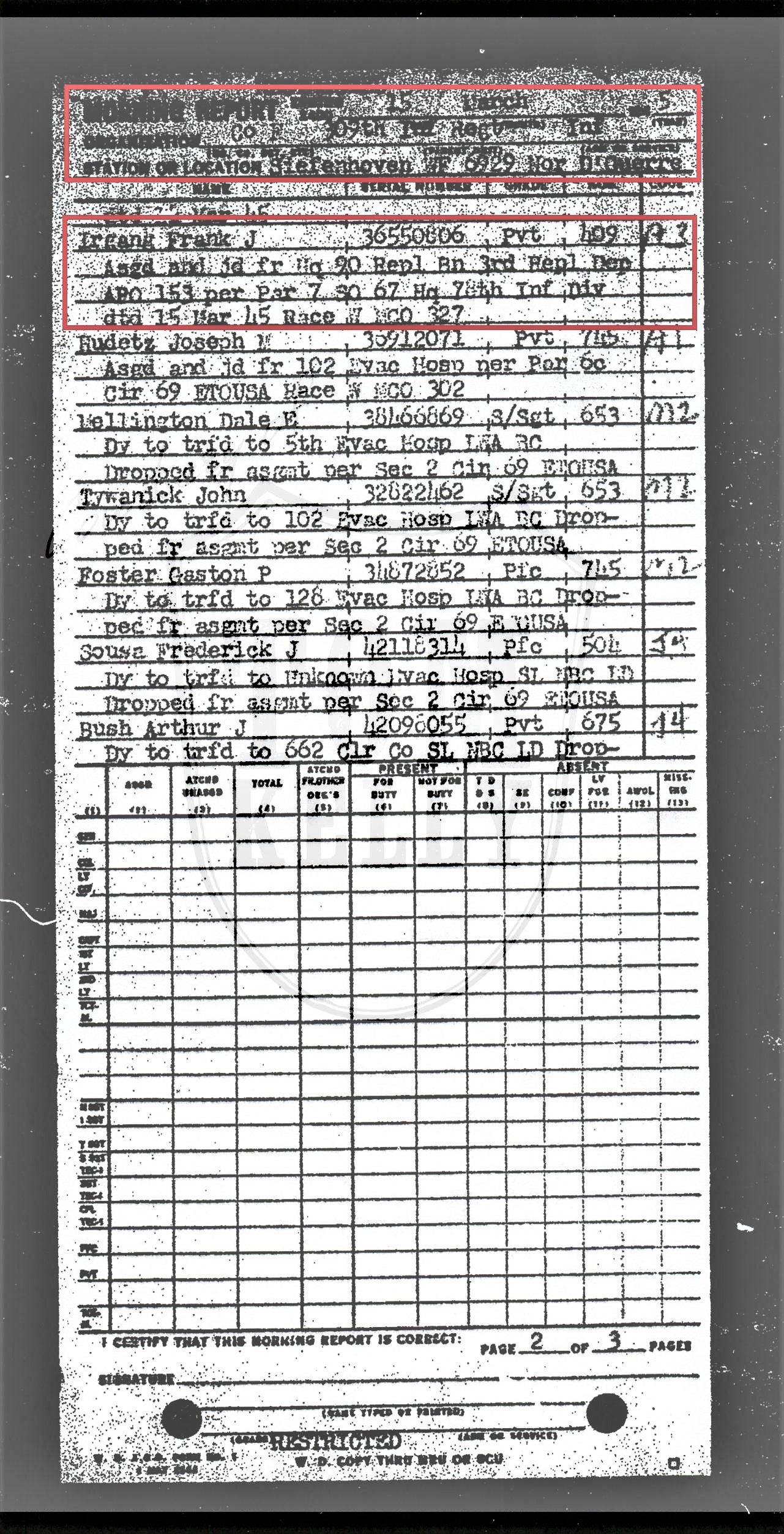
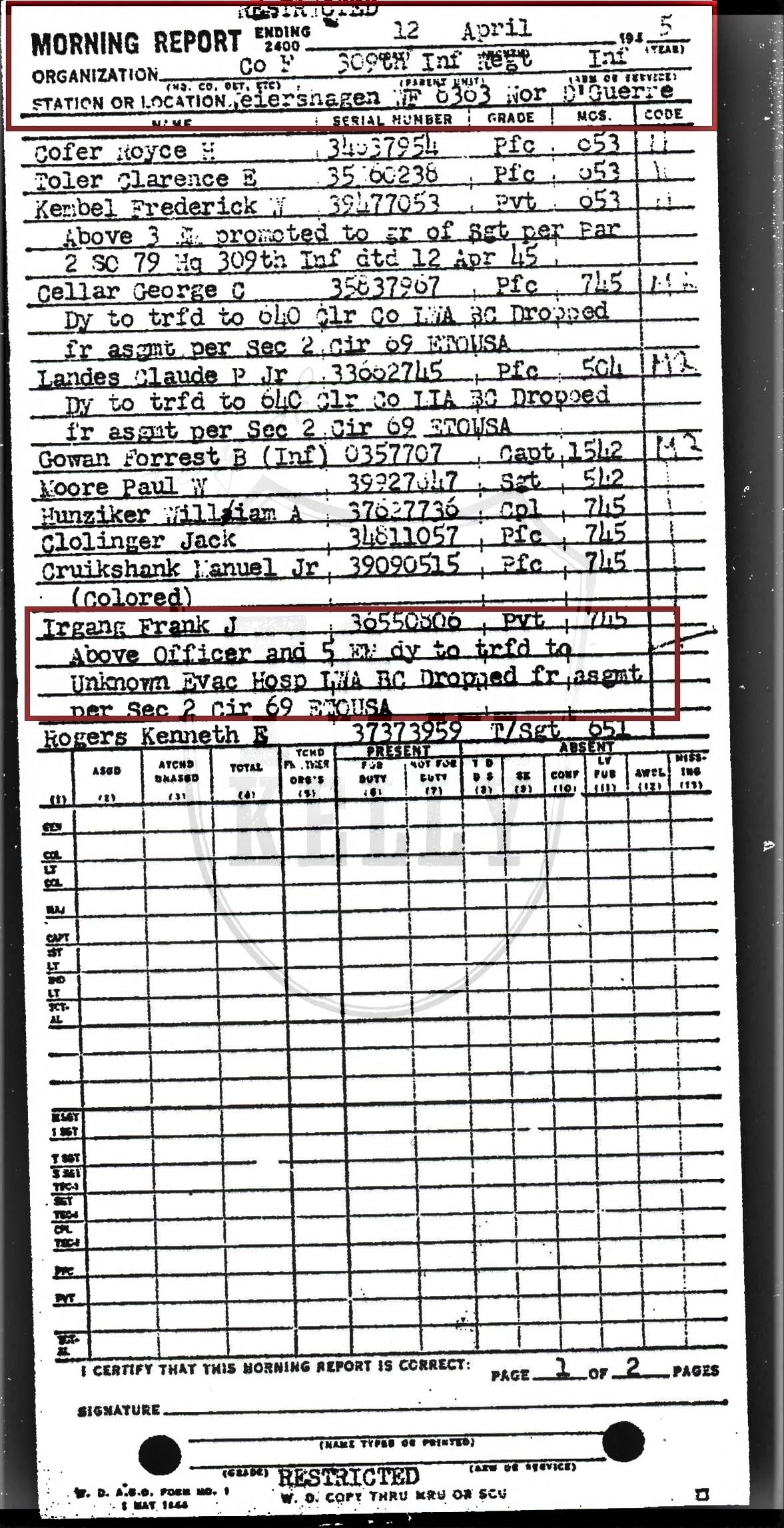
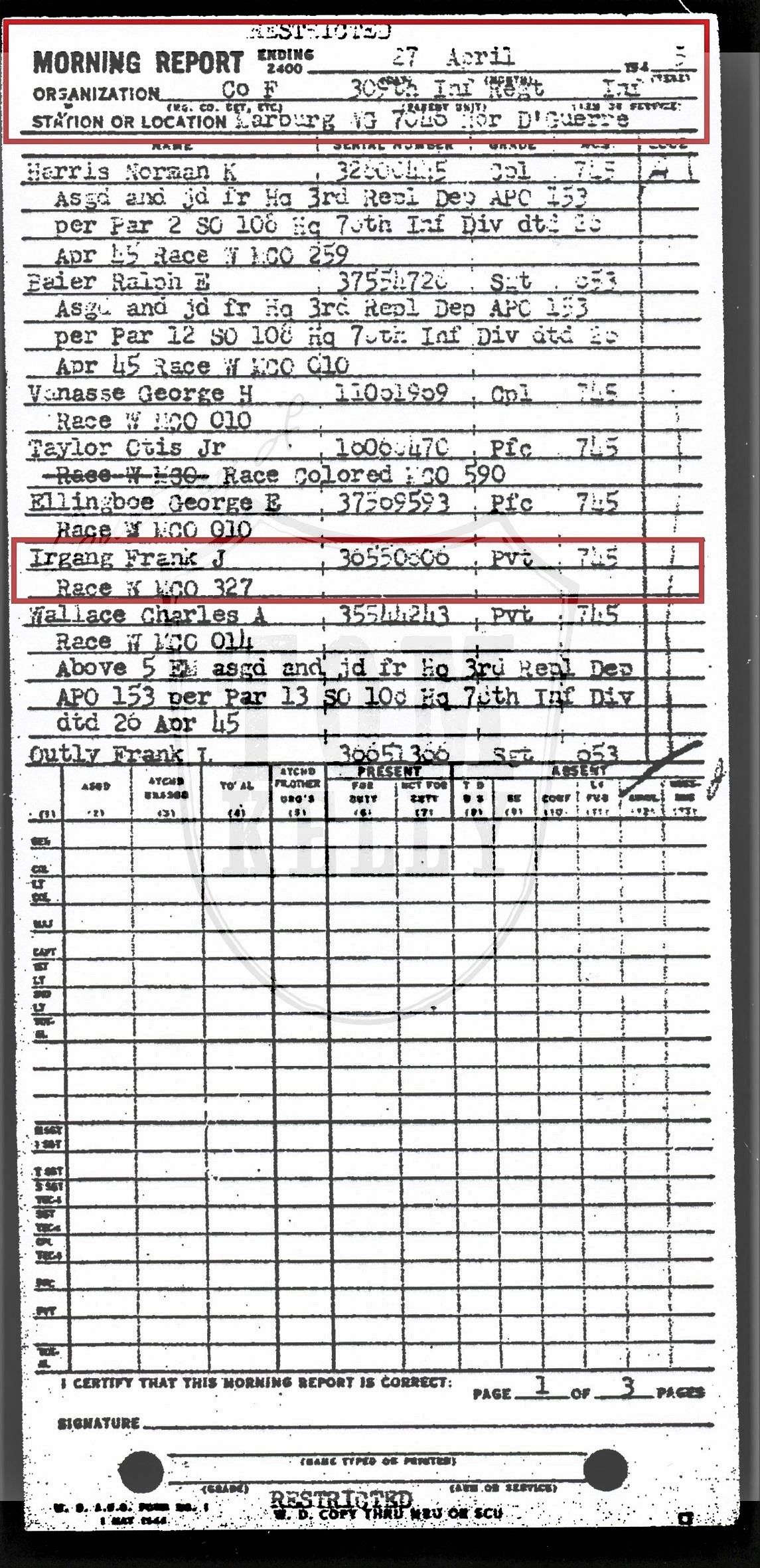
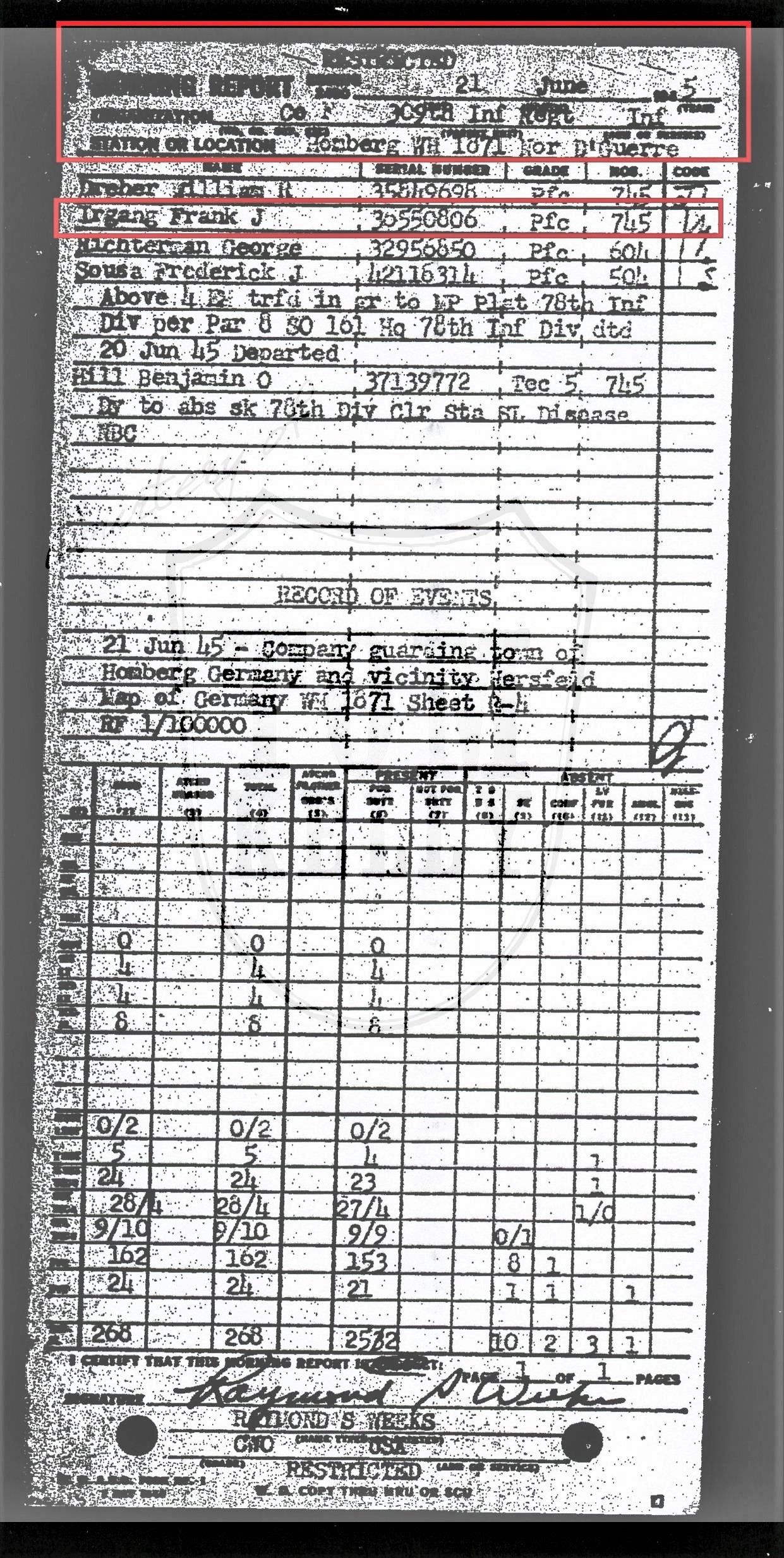
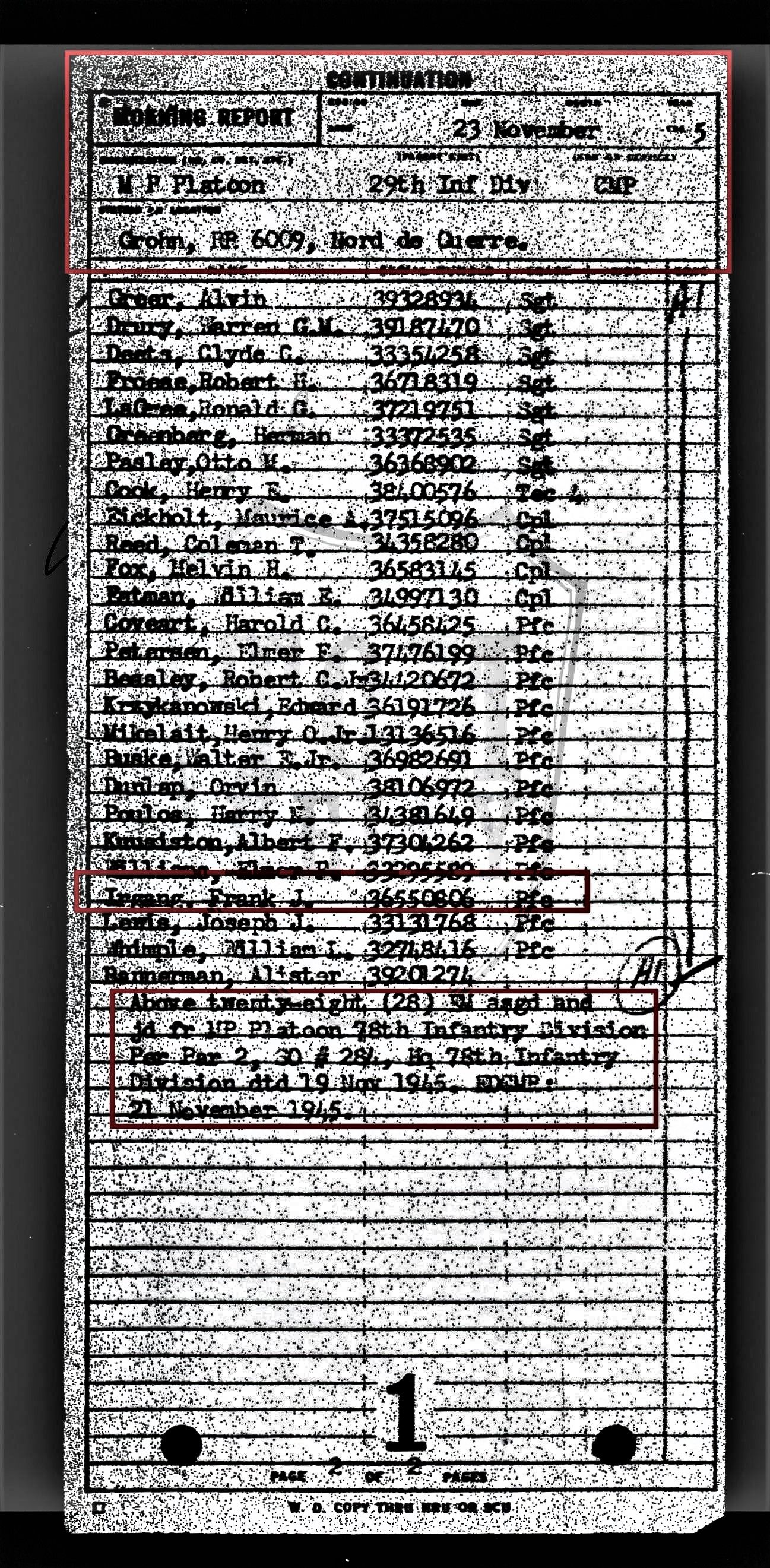
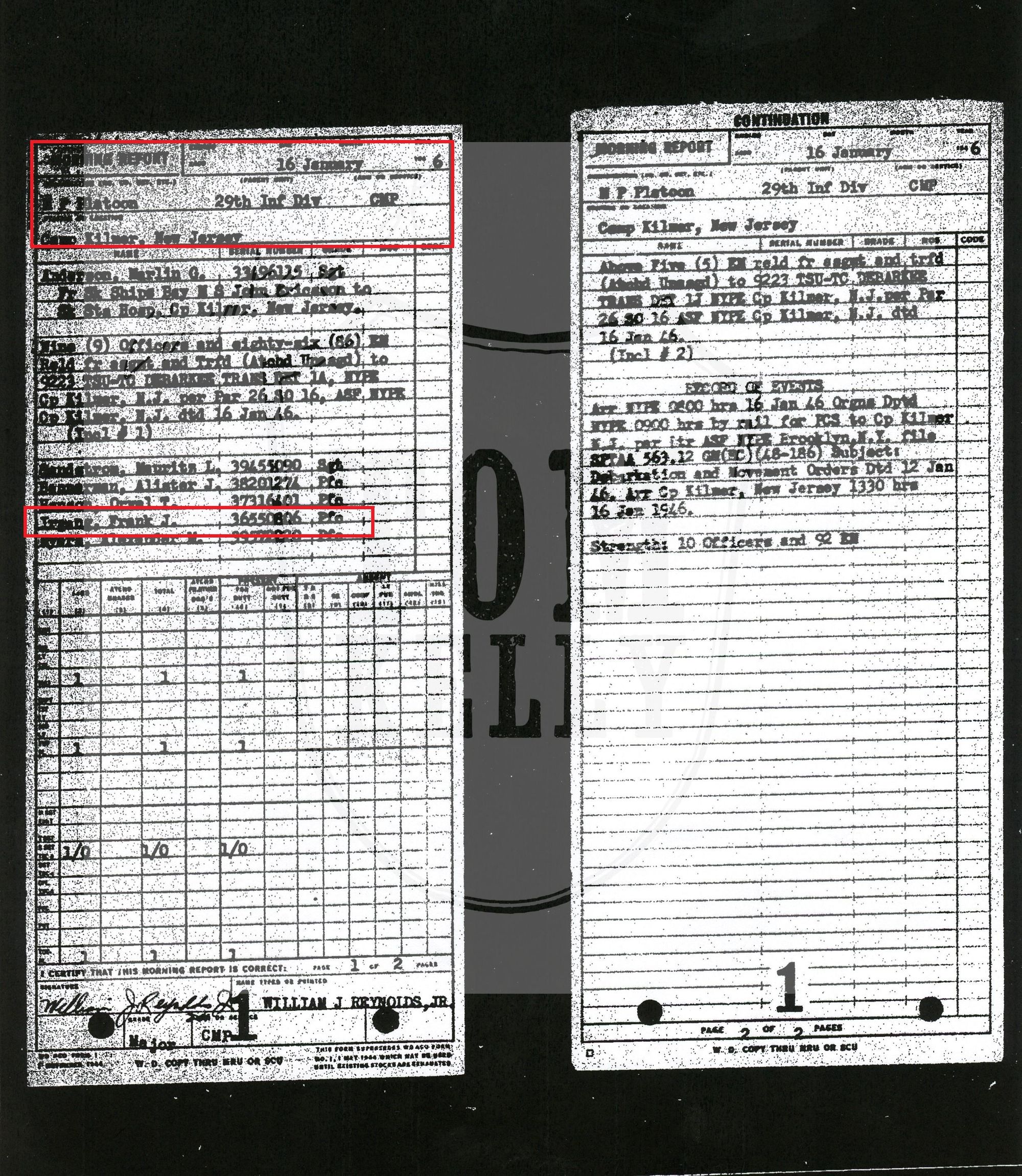
To be clear, there is absolutely no evidence Irgang ever landed on D-Day, or for that matter, served in combat with the 29th Infantry Division. The compendium of 29th Infantry Division morning reports (i.e. the daily report of personnel changes in a unit) from June 1, 1944 to May 31, 1945, created by the 29th Division Association does not contain a single entry for a soldier with the last name Irgang.[14] This alone is damning evidence. According to Joseph Balkoski, author of the definitive history of the 29th Infantry Division in World War II and National Historian for the 29th Division Association, “Had [Irgang] been a member of the [29th Infantry Division] for as long as he claims to have been, the odds are overwhelming that he would have been mentioned, at least once, in the 175th [Infantry Regiment’s] morning reports.”[15] Based on the available records, namely Irgang’s discharge, the morning reports of the units he served in, and the records of the Surgeon General of the Army, Irgang served honorably and was a bona fide combat infantryman who was wounded in action. But he did not land on D-Day with the 29th Infantry Division nor was he wounded in the fall of 1944 as he describes in Etched in Purple. There are elements of Etched in Purple that do mirror Irgang’s service with the 78th Infantry Division. For example, when Irgang was assigned to the 78th Infantry Division his Military Occupational Specialty (MOS) was 409, or Medical Technician, and he became a rifleman with the MOS 745.[16] Also, Irgang states that his company was reinforced by a “platoon of negroes”, a so-called “5th Platoon” of African American soldiers who volunteered to serve in white combat units after the Battle of the Bulge.[17] The morning reports for Irgang’s company show that on the day Irgang was wounded, an African American soldier in Irgang’s unit was wounded as well.[18] Also, Irgang’s claim that he was transferred to a military police unit after the war is verified by the morning reports of the 78th Military Police Platoon. Finally, Irgang did serve in the 29th Infantry Division, however not until months after the war ended and not as combat medic, but as a military policeman.
Creating a Fiction
Why would Irgang, a combat veteran of the 78th Infantry Division, feel compelled to lie about his wartime experiences? And where did he find the inspiration for the chapters of Etched in Purple that could not be based on his own experience? According to interviews conducted by Rob Morris, author of several histories of Army Air Corps units in the Second World War and webmaster of the “Remembering World War II Air Men” blog, Irgang had taken some notes during combat, but did not begin writing Etched in Purple after his boss, a World War I veteran, suggested that writing would help him deal with his persistent nightmares.[19] Irgang described the process of writing Etched in Purple as “a catharsis.”[20] It is hard to comprehend why and, indeed, Irgang gives no indications, he embellished his service when writing Etched in Purple, but there are several possibilities. Irgang may have wanted to add length to his work, or his publisher, Frank Gibson, may have pressured him to provide additional pages. Or he may have been at the forefront of a trend noticed by another World War II veteran in the 1970s that some self-serving veterans, “obviously commercially motivated, indulge in descriptive detail designed to excite our imagination about the adventure and gore of war and, perhaps, result in a salable movie scenario.”[21]
In any case, the basis for his tales about landing on D-Day and the events before Etched in Purple resembles his experiences with the 78th Infantry Division in the spring of 1945 may have come from stories he heard in replacement depots in the months before joining the 78th Division or from veterans of the D-Day landings in the 29th Infantry Division that he returned to the United States with in 1946.[21] 29th Infantry Division historian, Joseph Balkoski, believes that it is unlikely that Irgang would have taken his stories from D-Day veterans in the 29th Division because even in the waning months of the war very few D-Day veterans remained with the unit, and that by the time Irgang joined the 29th Division the number would have been “infinitesimal.”[23] Balkoski believes that Irgang may have chosen the 29th Division instead of the 1st Infantry Division, the other infantry division that landed on Omaha Beach on June 6, 1944, because his lies may have been more likely to be discovered by members of a regular Army unit with such a long and distinguished history. Another possibility is that Irgang was experimenting with writing fiction. After Etched in Purple Irgang published two more books, both works of historical fiction, titled Beneath the Snows of Stalingrad and The Wyandotte, neither were as widely acclaimed as Etched in Purple.
Selling a Lie
Etched in Purple was first published in 1949 and the 3,000 copies printed quickly sold out.[24] At the time, Etched in Purple was praised as “a taste of the brutal truth.”[25] In later years, first editions of Etched in Purple commanded high prices on the secondary market when they could be found.[26] Irgang would go on to become the chairman of the Industrial Arts department at San Diego State University and author several historical fiction novels.[27] For over 50 years, Etched in Purple was a little-known work, until Rob Morris, an author of several histories of the Second World War purchased a copy at a thrift store, found Frank Irgang, and helped convince Morris’s publisher Potomac Books to reprint Etched in Purple for the first time since 1949.[28] In May 2008 Potomac released their edition of Etched in Purple and exposed it to generations of new readers.[29] On February 1, 2011 Frank Irgang died, and his obituary referenced how he landed at Normandy, served as a combat medic, and fought in the Battle of the Bulge.[30] During 2007 and 2008, in his discussions with Morris, Irgang freely discussed his fictional combat experiences with the 29th Infantry Division in Normandy, but never mentioned his service with the 78th Infantry Division.[31] There are subtle indications that Irgang was lying to Morris. At one point he told Morris “The 29th Division landed on Omaha Beach on D-Day. The 175th landed about noon. The others had come in at around five or six a.m., and many of these men were dead and floating in the water.”[32] This of course is not true. The 175th Infantry Regiment was in reserve on D-Day and did not land until the next day, June 7, 1944.[33] Irgang’s perpetuation of the lie that he had landed in Normandy was likely motivated by the possibility that his book would be republished. What is curious is that in official correspondence with the Army after the war, Irgang seems to have been able to distinguish between his actual service, and the version he describes in Etched in Purple. For example, in a 1977 letter to the Army seeking an award of the bronze star based on his having earned the combat infantryman’s badge, he only refers to his service “as an infantry rifleman with Company F, 309th Infantry Regiment, 78th Infantry Division.”[34] There is no mention of his service as a combat medic or the 29th Infantry Division. Irgang attached his discharge to his letter which similarly contains no references to the 29th Infantry Division or the first wound he claims to have received in Etched in Purple.[35]
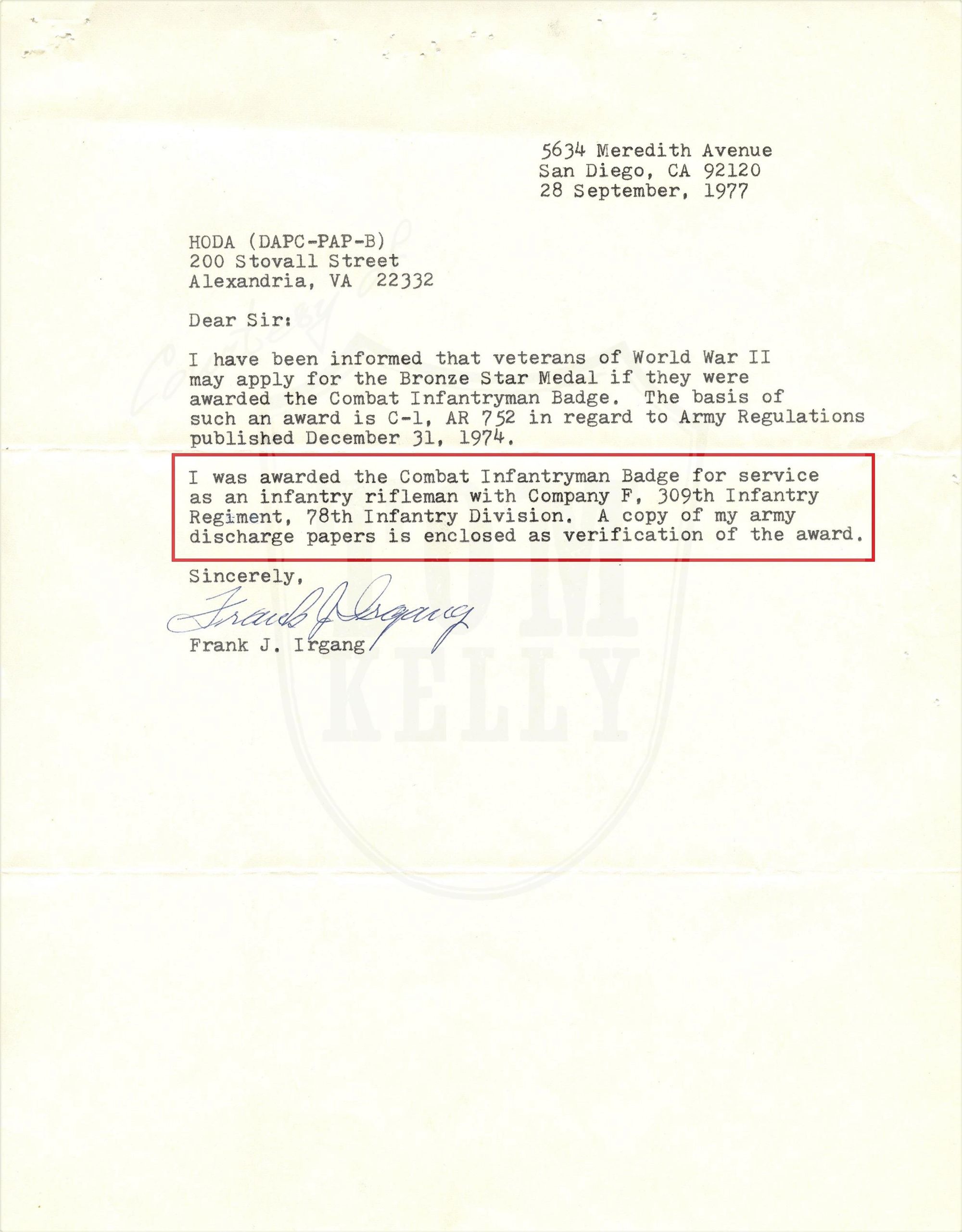
In a later request for a replacement Purple Heart medal, which asks that the requester identify their “last organization, if known” Irgang correctly identified the last unit he served with as the “29th Infantry Division.” Even still, the request undermines the claims made in Etched in Purple and contradicts, albeit in a minor respect, his own service history because Irgang claims he “was issued the purple heart at a field hospital in Germany (1945) but it was lost when I returned to the front.”[36] This request cannot pertain to the first wound that he claims to have received in Etched in Purple because according to Irgang that supposedly happened in “mid-October” 1944.[37] Irgang must be referring to the wound he received on April 12, 1945, however, when Irgang returned to F Company on April 27, 1945, it had not been involved in combat for nine days and did not see further action before V-E Day.[38]
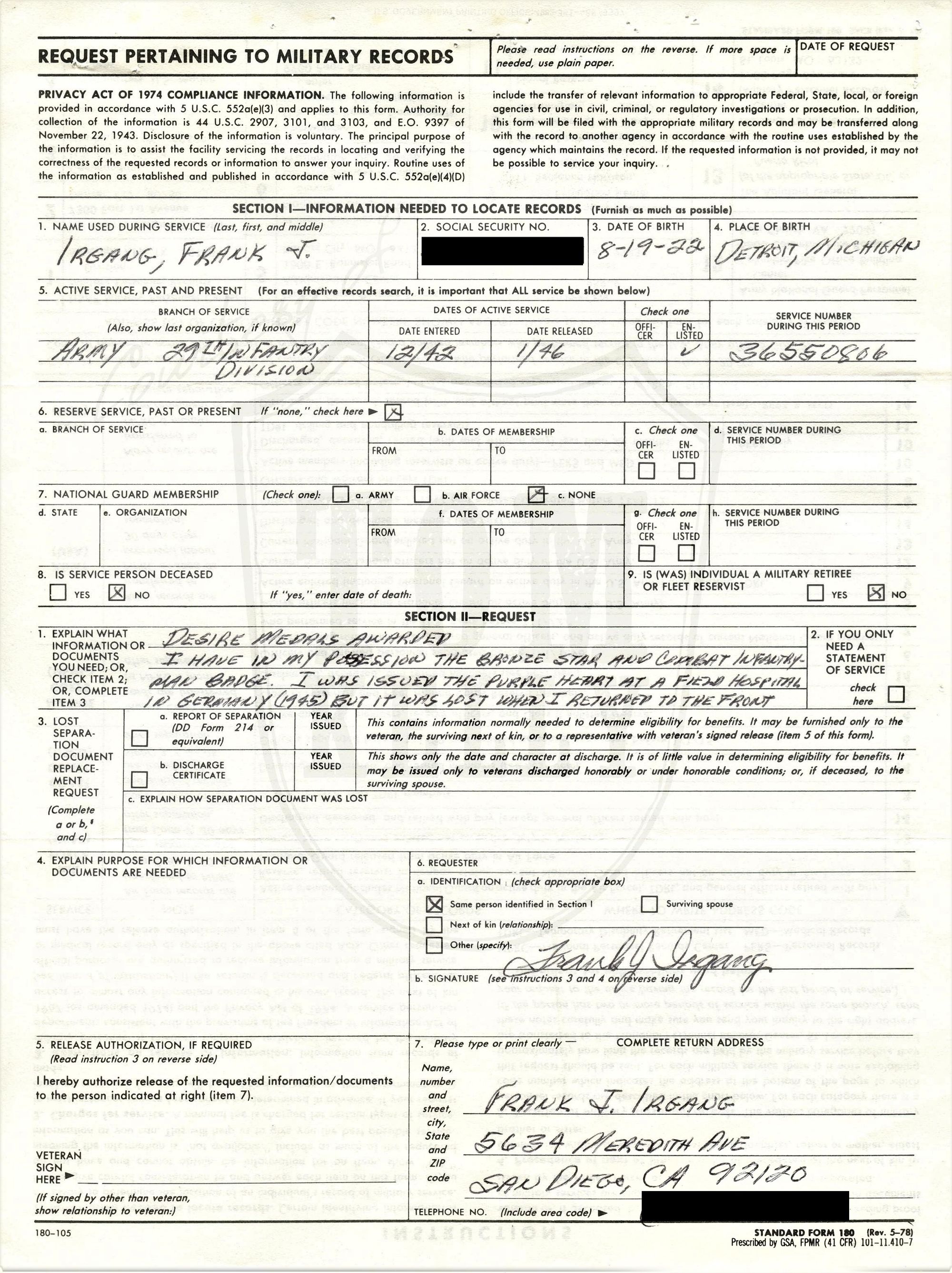
In the jacket of the first edition of Etched in Purple there is no indication that Etched in Purple is anything but an honest account of Irgang’s war experiences. In fact it says the book is “Frank Irgang’s personal record of his experiences as a combat infantryman in World War II”, “a well-timed revelation of one infantryman’s experiences. . . revealed truthfully and with a freshness of reality” and Irgang is quoted as saying it is a “report of my experiences”.[39] Potomac Books, the current publisher echoes that language, and describes Etched in Purple as Irgang’s “personal record of his unforgettable experiences as a combat infantryman during World War II.”[40]
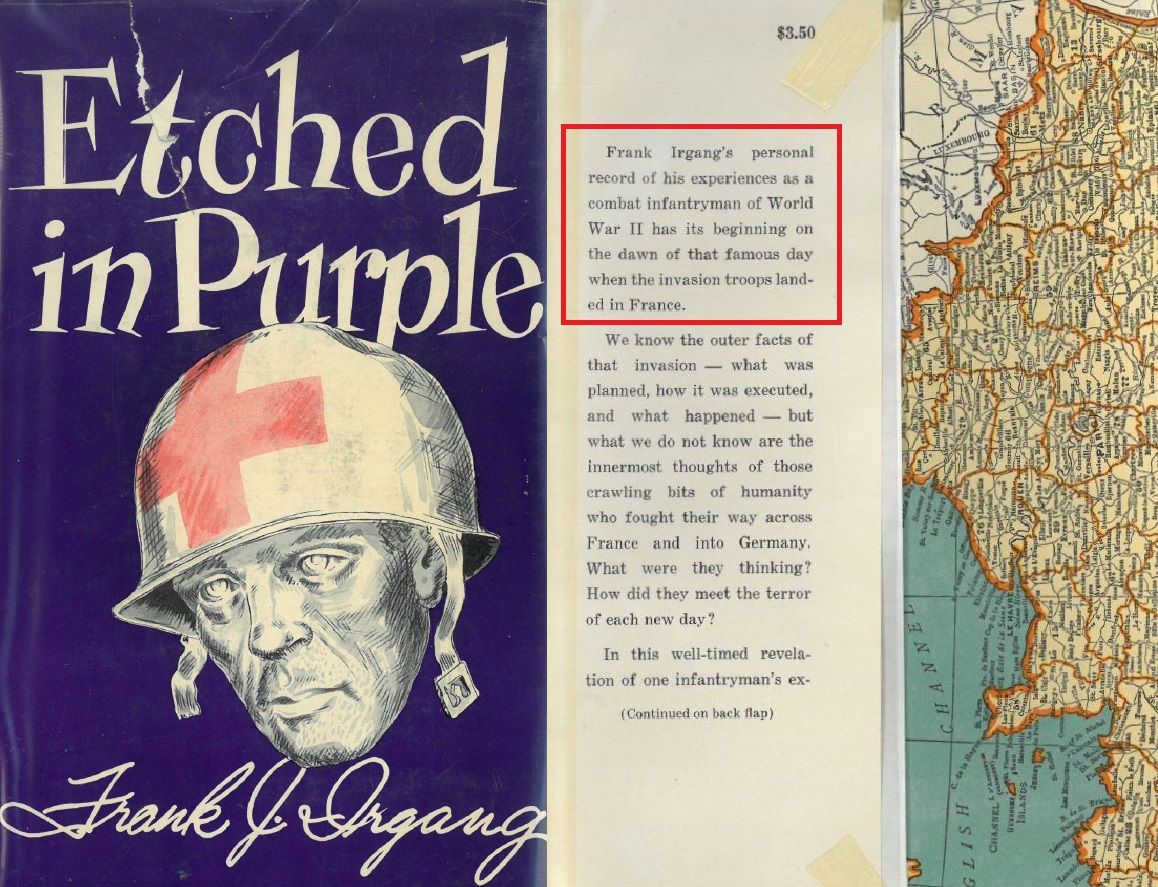
What is interesting is that in later years, before Rob Morris contacted him and helped get Etched in Purple reprinted, Irgang may have begun signaling that Etched in Purple was fictionalized. An archived version of his San Diego State University webpage describes Etched in Purple as “based on his wartime experiences.”[41] This is the only reference the author has found that portrays Etched in Purple as anything other than Irgang’s “personal record.”
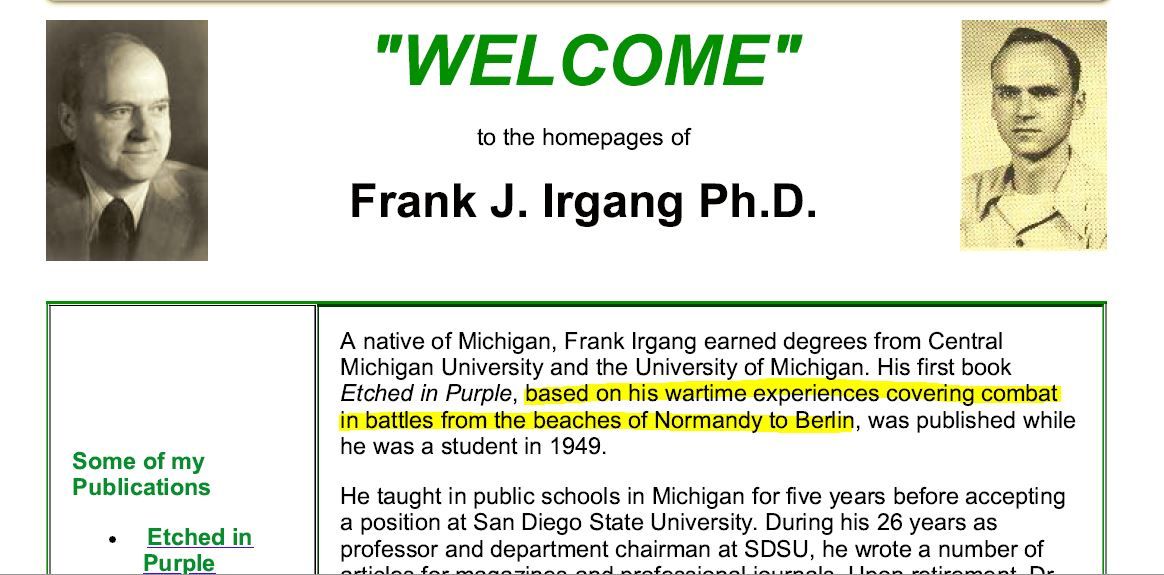
The author contacted Rob Morris, who interviewed Irgang before his death and helped get Etched in Purple reprinted. When the author presented Morris with Irgang’s service records and the falsehoods in Etched in Purple Morris was shocked because, “[Irgang] seemed like such a standup person.” Irgang told Morris that he was intentionally vague with the units in which he served, and the dates and locations of events because that information “was still classified,” which was not true. Morris believes that vagueness helped Irgang’s lies avoid detection for decades. Morris is certain that if Irgang fictionalized Etched in Purple that, “the book should be listed as fiction and Potomac [Books] should change it from non-fiction to historical fiction” because, “the truth is the most important thing.”[42]
Conclusion
Frank Irgang was a hero, from what we can definitively establish, he fought honorably in a rifle company for almost a month and was wounded in action. Frank Irgang was also a liar. Perhaps that makes exposing his lies more uncomfortable, but nonetheless necessary. The concern is not over Frank Irgang’s legacy as a combat infantryman with the 78th Infantry Division, which is unquestionable, but instead that future generations will mistakenly read Etched in Purple and believe that it is fact – when it is not. Etched in Purple may be the finest piece of historical fiction to come out of the Second World War, but it can no longer be categorized as a memoir or relied upon by historians.
Epilogue
After this article was originally published on December 27, 2018 the publisher of Etched in Purple, Potomac Books (without replying to the author's e-mails presenting this research) removed Etched in Purple from its website.
Acknowledgements
The author thanks Matt LeMasters, a history major at the University of Illinois Springfield, for obtaining copies of Frank Irgang’s service records and morning reports of the units he served in from the National Personnel Records Center in St. Louis, Missouri, Joseph Balkoski for providing his analysis and commentary on the 29th Infantry Division in World War II, Rob Morris for discussing his relationship with Frank Irgang, and Marty Morgan, Julian Chalifoux, Joshua M. Kerner, and Charles W McFarlane for providing commentary during the drafting of this article.
Footnotes
[1] Irgang, Frank J. Irgang, Etched in Purple: One Man’s War in Europe (Washington, DC: Potomac, 2008), Back cover.
[2] Ibid., 1; Robert Morris. "Remembering D-Day: Frank Irgang's Etched in Purple." Remembering World War II Airmen. May 31, 2008. Accessed December 21, 2018. https://untoldvalor.blogspot.com/2008/05/remembering-d-day-frank-irgangs-etched.html.
[3] Irgang, Etched in Purple, 101.
[4] Ibid., 136.
[5] Ibid., 163-64, 169.
[6] Ibid., 181-87.
[7] Ibid., 231-27.
[8] Ibid., 239.
[9] Honorable Discharge of Frank J. Irgang, Serial No. 36550806, dated January 23, 1946.
[10] A possible, and likely, reason for Irgang’s lengthy stay in the Army’s replacement system may have been his Military Occupation Specialty, which was 409 or medical technician. During this period, the Army’s investigation of the replacement system revealed that while riflemen progressed quickly through replacement depots to combat units, soldiers with specialties like Irgang “remained in the system a long time.” Lt. Col. Arthur Goodfriend, "Replacement Rifleman," Infantry Journal, March 1946, 8-16, 15; Morning Report of F Company, 309th Infantry Regiment, dated March 15, 1945.
[11] Morning Report of F Company, 309th Infantry Regiment, dated April 12, 1945; Information from the Hospital Admission Cards created November 27, 2018, by the Office of the Surgeon General, Department of the Army (1942-1945) and (1950-1954), Service Number 36550806.
[12] Morning Report of F Company, 309th Infantry Regiment, dated April 27, 1945; Morning Report of F Company, 309th Infantry Regiment, dated June 21, 1945.
[13] Morning Report of the 29th Military Police Platoon, dated November 23, 1945; Irgang Discharge.
[14] “29th Division Morning Reports Company Morning Reports: June 1, 1944 to May 31, 1945.” The 29th Division Association. Accessed December 21, 2018. http://www.29thdivisionassociation.com/MorningReports.html.
[15] Email from Joseph Balkoski to the author dated December 8, 2018.
[16] Morning Report of F Company, 309th Infantry Regiment, dated March 15, 1945.
[17] Irgang, Etched in Purple, 220.
[18] Morning Report of F Company, 309th Infantry Regiment, dated April 12, 1945; The 78th Infantry was one of the few divisions that utilized 5th Platoons in 1945. Ulysses Lee, The Employment of Negro Troops (Honolulu, HI: University Press of the Pacific, 2004), 695.
[19] Morris, "Remembering D-Day: Frank Irgang's Etched in Purple."
[20] Ibid.
[21] John H. Toole, Battle Diary (Vigilante Press. Missoula: MO. 1978), xi.
[22] Because replacements newly arrived on the Continent were kept in the same camps as soldiers who had recovered from wounds or sickness and were to be “Returned to Unit” or “RTU”, untested soldiers quizzed the veterans on what they could expect at the front and the veterans sometimes exaggerated the dangers. Goodfriend, "Replacement Rifleman," 8-16, 10, 14; Chester H. Jordan, Bull Sessions World War II: Company K, 47th Inf., 9th Div. from Normandy to Remagen (N.p. : N.p., 1991), 35.
[23] Phone call with Joseph Balkoski, December 13, 2018.
[24] Morris, "Remembering D-Day: Frank Irgang's Etched in Purple."
[25] Ibid.
[26] Ibid.
[27] San Diego Union-Tribune. "War Veteran, Author, Professor Frank Irgang Dies at 88." Sandiegouniontribune.com. September 02, 2016. Accessed December 21, 2018. https://www.sandiegouniontribune.com/sdut-wwii-veteran-author-professor-frank-irgang-dies-2011mar07-story.html.
[28] Morris, "Remembering D-Day: Frank Irgang's Etched in Purple."
[29] Ibid.
[30] "War Veteran, Author, Professor Frank Irgang Dies at 88."
[31] Morris, "Remembering D-Day: Frank Irgang's Etched in Purple."; Phone call with Rob Morris, December 26, 2018; Irgang did discuss his service with F Company, 309th Infantry Regiment, 78th Infantry Division with another author, Tracy Schilcutt, Ph.d. Schilcutt’s book Infantry Combat Medics in Europe, 1944–45, opens with a description from Irgang of an F Company engagement in the spring of 1945, however later in the book Irgang also gives a fictional account of his participation in the D-Day landings. The author’s attempts to solicit comments from Schilcutt were unsuccessful. T. Shilcutt, Infantry Combat Medics in Europe 1944-45, (N.p. : Palgrave Pivot, 2014), 1, 33-34.
[32] Morris, "Remembering D-Day: Frank Irgang's Etched in Purple."
[33] "175th Infantry (5th Maryland)." The 29th Division Association. Accessed December 21, 2018. http://www.29thdivisionassociation.com/175th Infantry history.html.
[34] Frank Irgang letter dated September 28, 1977, from Frank Irgang’s personnel file at the National Personnel Records Center.
[35] Ibid.
[36] Request Pertaining to Military Records, undated, From Frank Irgang’s personnel file at the National Personnel Records Center.
[37] Irgang, Etched in Purple, 101.
[38] Lightning: The Story of the 78th Infantry Division (Washington, D.C.: Infantry Journal Press, 1945), 233.
[39] Frank J. Irgang, Etched in Purple (Caldwell, ID: Caxton Printers, 1949), inside cover and back cover.
[40] "Etched in Purple - University of Nebraska Press." Nebraska Press. Accessed December 21, 2018. https://www.nebraskapress.unl.edu/potomac-books/9781597972048/.
[41] "WELCOME" to the Homepages of Frank J. Irgang Ph.D. Accessed December 21, 2018. https://web.archive.org/web/20070824174902/http://www-rohan.sdsu.edu/faculty/firgang/index.html.
[42] Phone call with Rob Morris, December 26, 2018.